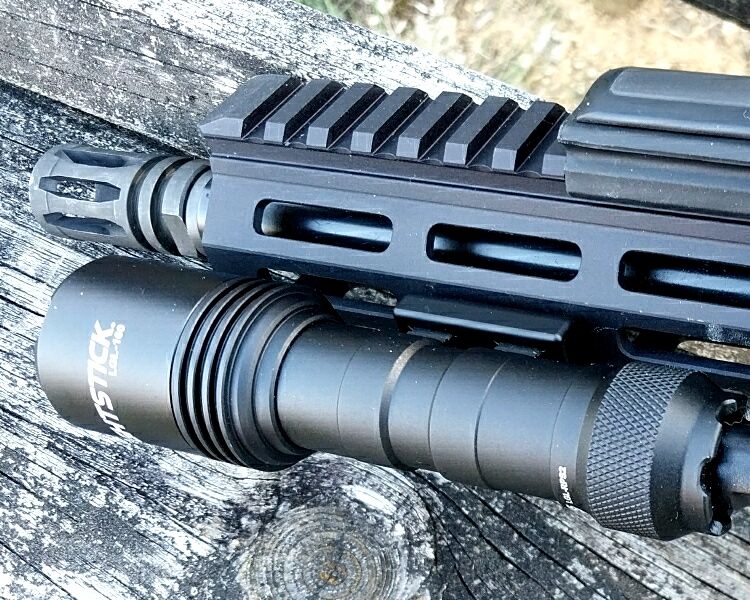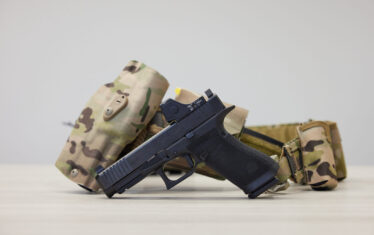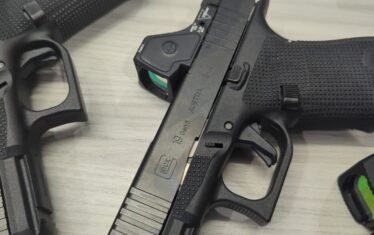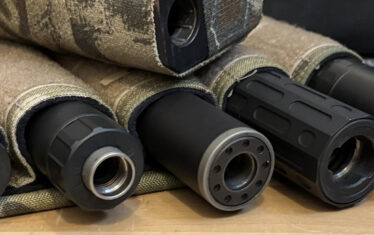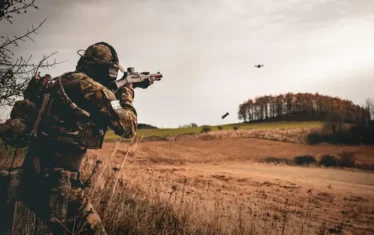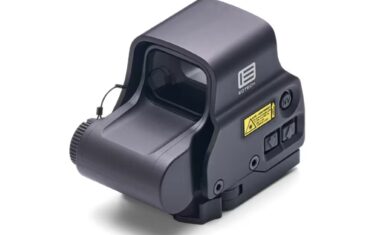Nightstick is quickly becoming a leader in the weapon light industry. The company’s well-designed and versatile lights are now used by civilians and professionals alike.
I’d been aware of Nightstick for a while but had never used any of their products. That changed recently when I picked up several lights for testing. Today, we look at the LGL-160 Full Size Long Gun Light.

I’ve run the LGL-160 on two different AR-15 rifles for about two months now. I’ve learned how this light performs, what it’s good for, and maybe where it isn’t the best choice, depending on your needs. So, let’s take a look at the LGL-160 and see how it did. We’ll start with the specs:
Nightstick LGL-160 Specifications
- High Lumens: 1,100
- High Candela: 22,541
- High Beam Distance: 304 meters
- Overall Length: 5.3 inches
- Case Diameter: 0.9 inches
- Head Diameter: 1.4 inches
- Weight: 6.3 ounces
- Drop Rating: 2 Meters
- IP-X7 Waterproof/Dustproof Rating
- 2-hour Run Time
- Switch Function: Remote Pressure or Tail Cap
- Light Source: LED
- Aircraft Grade 6061-T6 Aluminum Case
- Type III Black Hard Anodized Finish
- Powered by 2 CR123 Batteries (included)
- Limited Lifetime Warranty
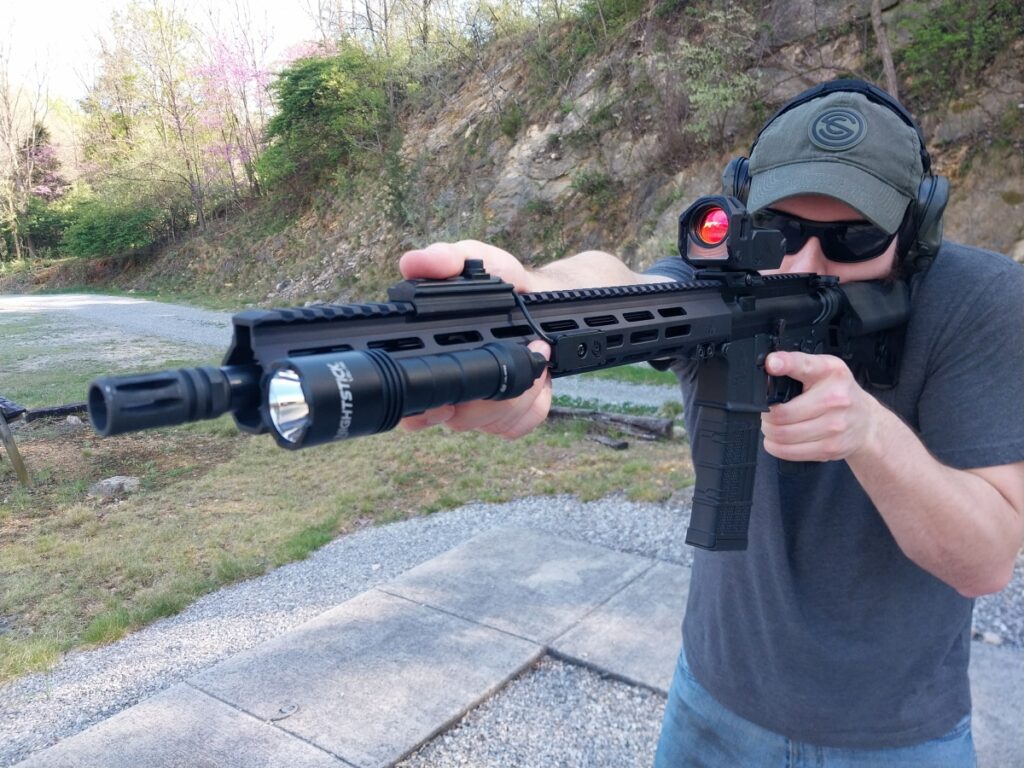
LGL-160 Features
The Nightstick LGL-160 boasts 1,100 lumens with a maximum 22,451 candela. Candela ratings indicate how focused the beam is, and how well it can penetrate smoke and fog. Candela also affects range. The higher the candela, the better the light’s performance. 22,451 is pretty high. More on that focus later. The light’s clear central beam and generous halo are enhanced by its high-efficiency deep parabolic reflector.
A tail cap push button and remote pressure switch provide options for how you’d like to control the LGL-160. The pressure switch attaches to the light via a tail cap as well. A mount attaches the pressure switch to the Picatinny rail, or you can use the included adhesive Velcro strips if you don’t want to use rail space.
The LGL-160 itself has three mounting options, two of which ship with the light. The first of these attaches directly to a Pic rail, while the other offsets at 45 degrees. Large, textured thumb screws clamp them down. I chose the third option, which is the separately available Nightstick LGL-ML2 M-LOK mount kit. The kit allowed me to mount the light directly to my M-LOK handguard, while also giving me a lower profile. Nightstick also includes an M-LOK wire management clamp, which I liked very much. It’s not a mandatory addition, but I like having the option.
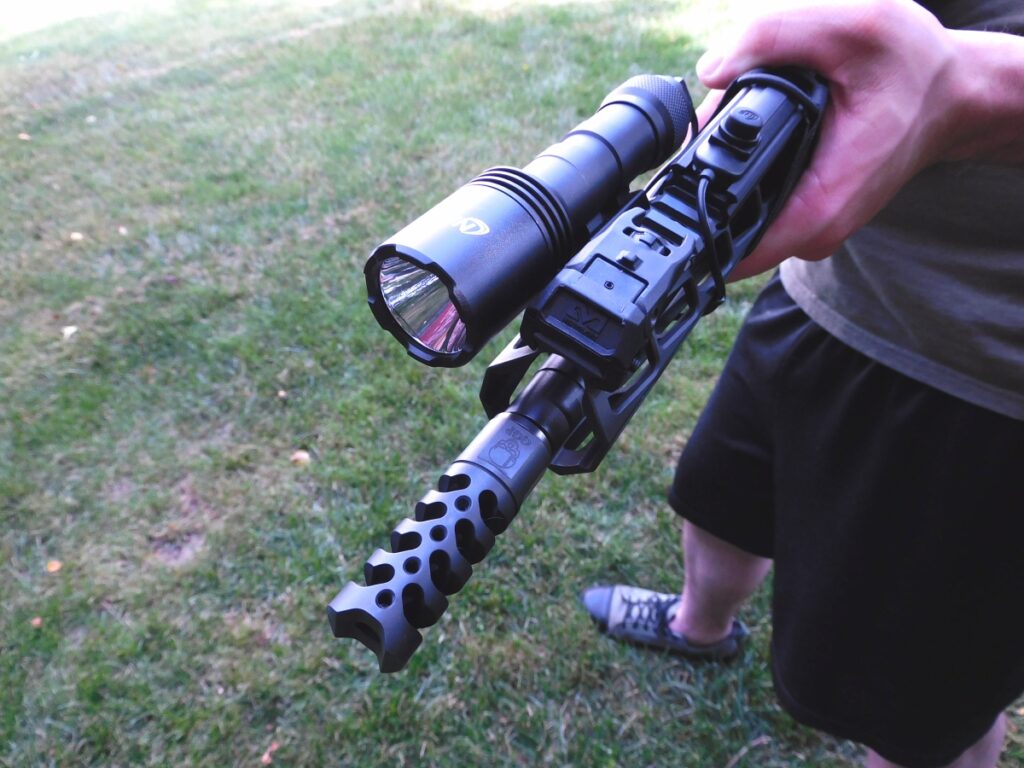
The LGL-160 ships with two CR123 batteries, but the light is also compatible with Nightstick’s USB Single Battery Charging Kit. That replaces the CR123s and allows you to recharge the battery. The two systems are easily swapped out if you want rechargeability while retaining the option to carry spare batteries.
Nightstick Performance
This light has impressed me. The central beam’s tight focus immediately jumped out at me, but it also retained a nice halo for peripheral illumination. I found it somewhat overpowering indoors, but it was fantastic outside.
One potential drawback, as I see it, is the lack of high and low settings. The LGL-160 is all the way on all the time. That hurts battery life, but if you know how to use a weaponlight, that isn’t a huge deal. Not for me, anyway. But the two-hour run time means I intend to buy a rechargeable battery kit sooner rather than later.
That brightness also means this light won’t be employed on my home defense carbine. I prefer a less powerful light with different settings for that role. But again, that’s no big deal. I have ARs that are not set up for home defense, so it’s perfect. Only you can decide whether that’s a factor in how you choose lights.
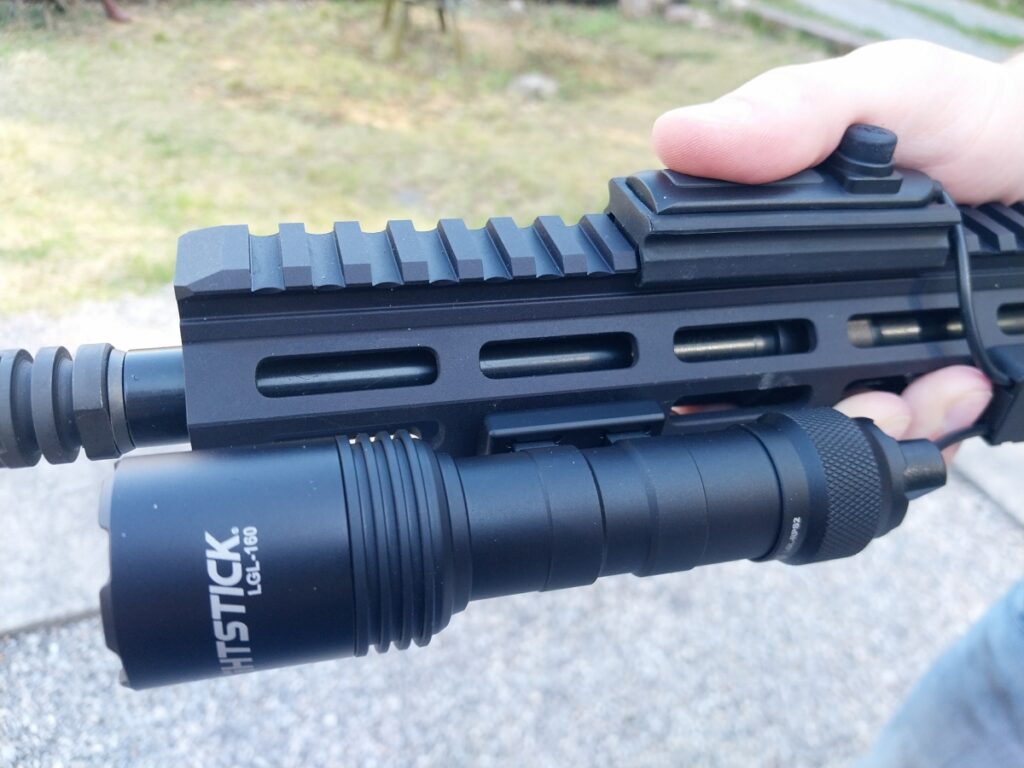
I used the remote pressure switch on both rifles, mounted on the top rail for use with a C-clamp grip. The pressure switch has constant-on and momentary functions. The first is activated by a raised push button, and the momentary by the pressure pad. The tail cap switch is tactile and responsive if you prefer that option.
I used the wire management clamp on my IWI Zion 15 test rifle, and it worked very well. But the light’s final home is my Grey Ghost Precision Mark II, on which I have less room. So, I had to go with zip ties. It happens.
The LGL-160s range is impressive, though I don’t think I would try to illuminate a potential target at 300 yards, assuming I even knew it was there. But that power provides great performance at reasonable ranges. I can easily identify a person at 50 yards using that focused central beam. And the halo provides plenty of peripheral performance. For the record, I held the light in my hand for all nighttime outdoor tests. It was not mounted on a rifle.

Conclusion
I test lots of accessories for my job. That’s why I have a dedicated, good-quality test rifle. It’s a great gig, but many accessories get tossed in a drawer when I’m done, relegated to test items themselves. After all, I don’t want to pull my first-line accessories from my personal firearms every time I need to test and evaluate a new gun. So, they do have a real purpose.
The LGL-160 will not be a test item anytime soon. It earned a spot on my number one AR-15, which is my Grey Ghost. The Nightstick gave me better performance and better mounting options with a lower profile. So, the previous light has been relegated. It was six or seven years old and needed to be upgraded anyway. But I digress.

I like this light. It has the best, most focused beam I’ve ever run. The controls are easy and responsive. It’s well-built and will stand up to what I do. Granted, I’m not a professional, but professionals do use this light. In fact, the National Tactical Officers Association tested and endorsed the LGL-160.
Last, but certainly not least, Nightstick products are competitively priced. They bring high performance, but you aren’t paying for a name. The LGL-160 is a great value. If it represents the entire Nightstick line, that’s encouraging indeed. I, for one, intend to find out.





